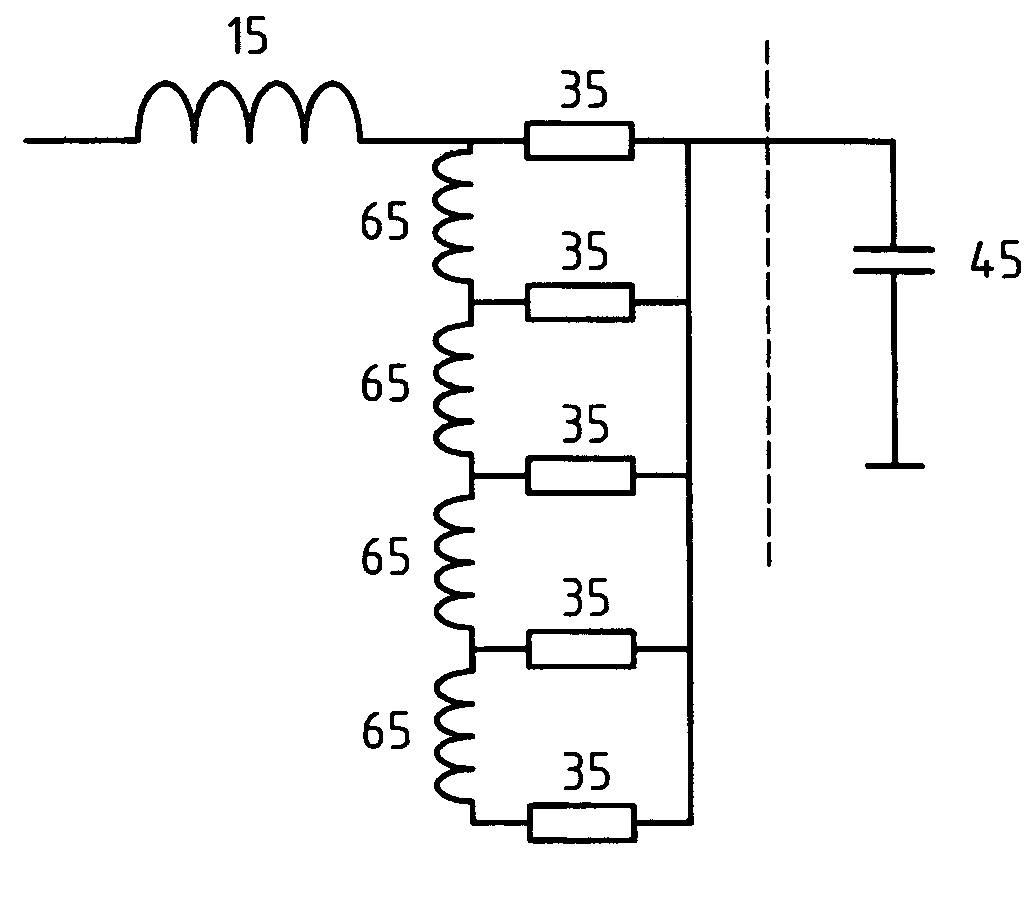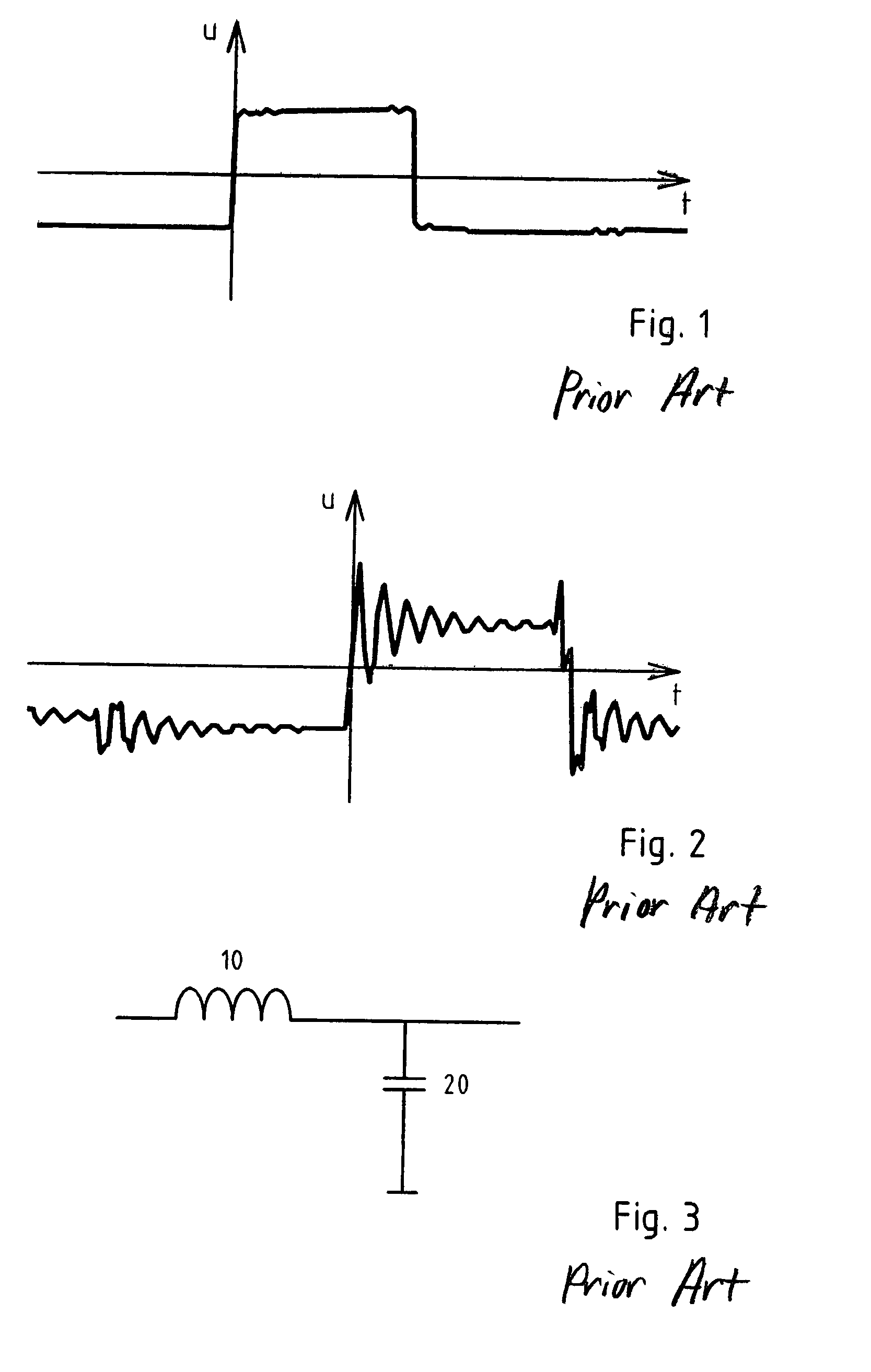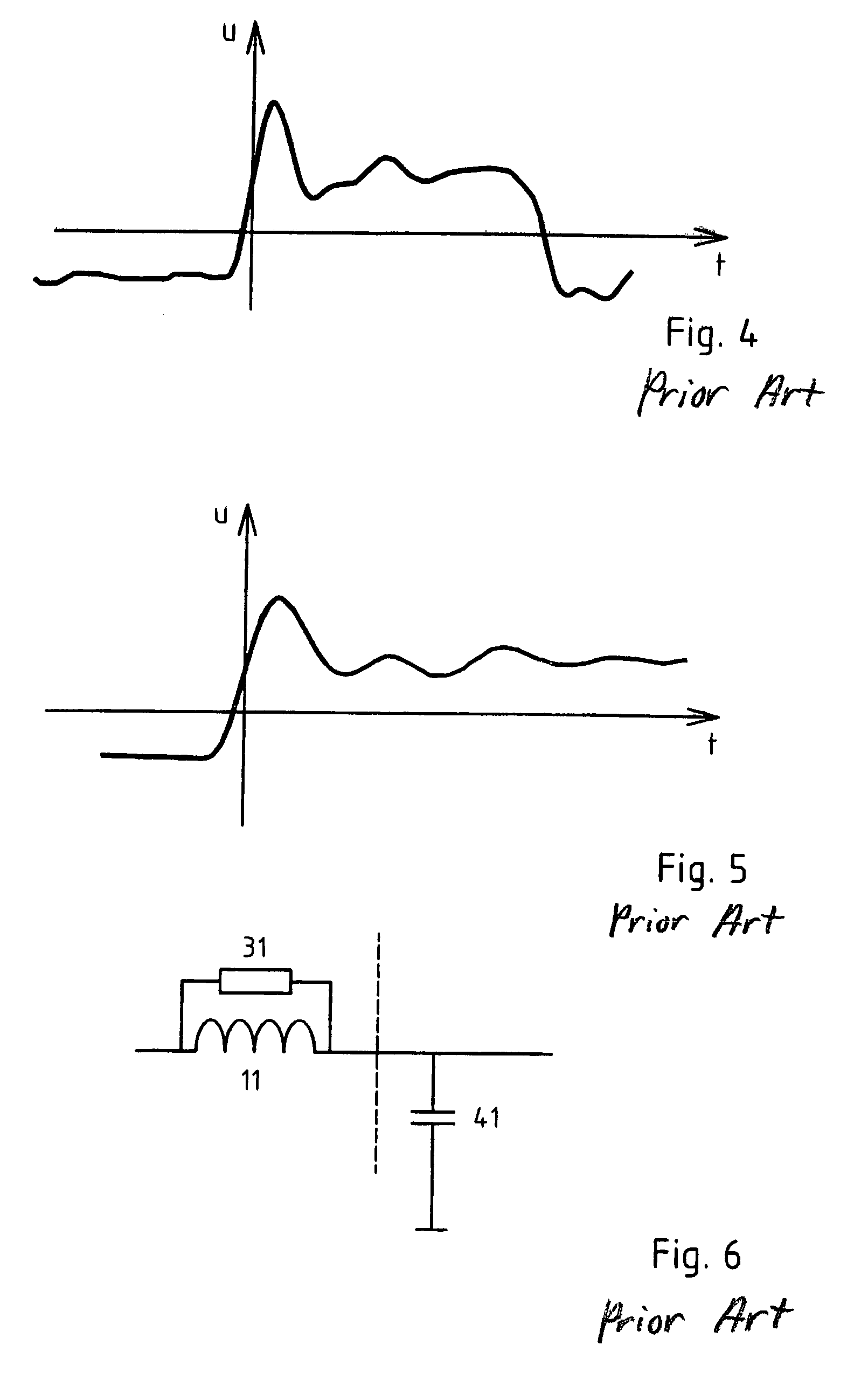Filter network for motor control systems
a filter network and motor control technology, applied in the field of filter network, can solve the problems of switching loss, generator of electromagnetic perturbations of neighboring devices, motor damage and/or other problems, and achieve the effect of low cost, low loss and low voltage overshoo
- Summary
- Abstract
- Description
- Claims
- Application Information
AI Technical Summary
Benefits of technology
Problems solved by technology
Method used
Image
Examples
Embodiment Construction
[0062]According to the invention, the optimal location for a damping resistor 34 in order to attenuate the overvoltage oscillations generated by a du / dt-filter essentially consisting of a choke 14, is in series with the choke 14 as illustrated in the schematics of FIG. 12. In such a configuration, the impedance of the resistor 34 and the impedance of the inductor 14 both contribute to the reduction of the voltage switching speed du / dt. Moreover, the oscillations related to the energy exchange between the filter's choke 14 and the filter's capacitance 24 and / or the oscillations related to the energy exchange between the filter's choke 14 and the not represented cable's capacitance are all efficiently attenuated by the resistor 34.
[0063]The voltage difference across the inventive filter network schematically represented in FIG. 12 is distributed over the resistor 34 and the inductor 14. The energy related to the voltage portion appearing across the resistor 34 will be dissipated into ...
PUM
 Login to View More
Login to View More Abstract
Description
Claims
Application Information
 Login to View More
Login to View More - R&D
- Intellectual Property
- Life Sciences
- Materials
- Tech Scout
- Unparalleled Data Quality
- Higher Quality Content
- 60% Fewer Hallucinations
Browse by: Latest US Patents, China's latest patents, Technical Efficacy Thesaurus, Application Domain, Technology Topic, Popular Technical Reports.
© 2025 PatSnap. All rights reserved.Legal|Privacy policy|Modern Slavery Act Transparency Statement|Sitemap|About US| Contact US: help@patsnap.com



